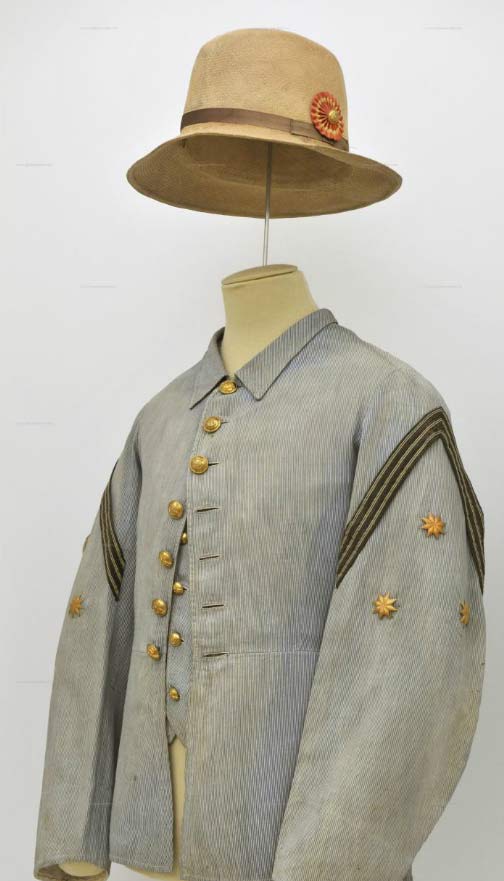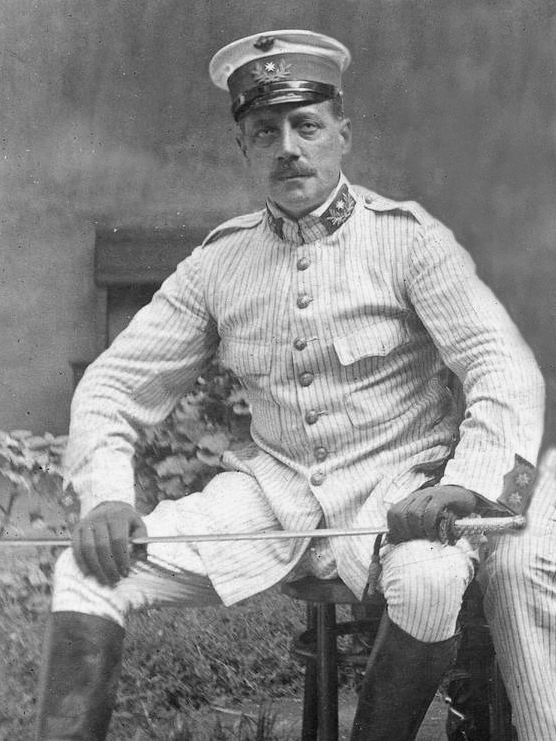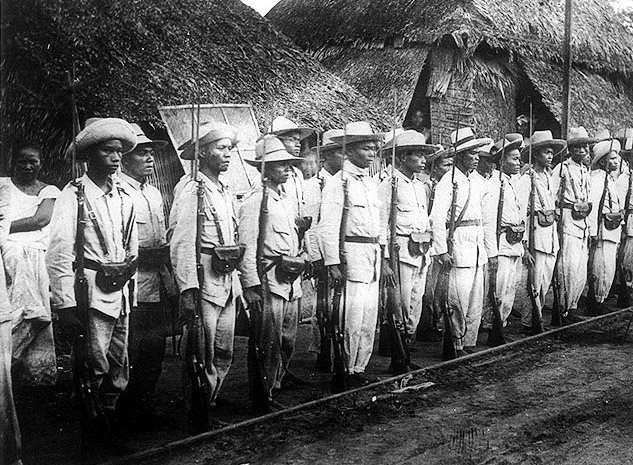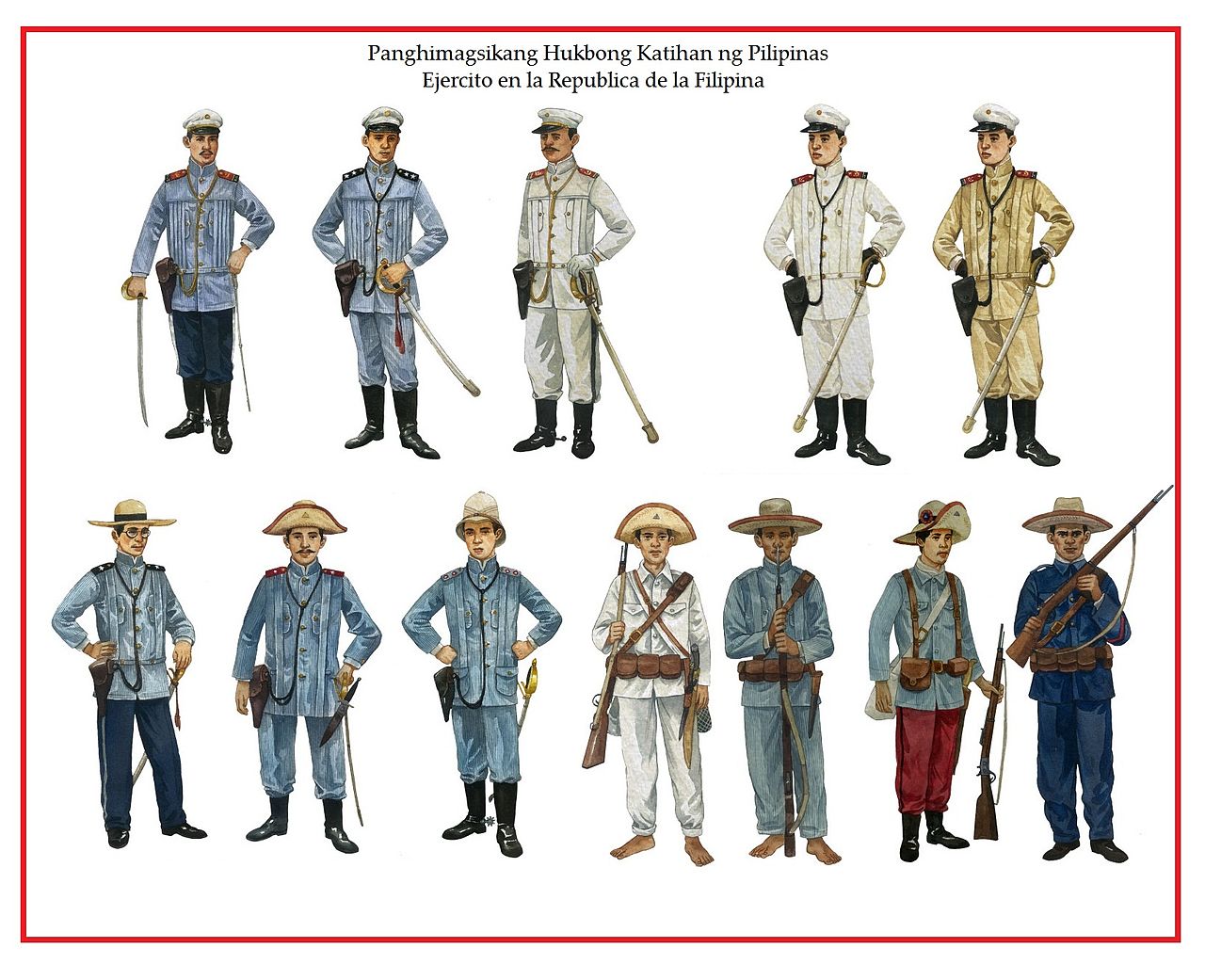
By the late 19th century nations around the world had largely adapted khaki as the de facto color for military uniforms for troops serving in tropical regions. Khaki, which originated from the Persian word for “dust,” was first used in the Indian subcontinent prior to the Indian Mutiny, but by the end of the century had seen use around the word.
However, Spain – a nation that had been among the earliest colonial powers – actually adopted an alternative to khaki. This was “rayadillo,” a cotton fabric that featured blue and white strips. It was worn by Spanish colonial soldiers from the middle of the 19th century until the early 20th century.
The term rayadillo is Spanish and translates to “striped material,” and in the mid-19th century, this material was referred to as being of hilo listado azure, or “blue striped thread”. It was known as dril azul rayado or “blue striped drill” by the end of the century.
The earliest examples of the fabric had light blue strips that were widely separated but overtime the fabric evolution so that by the outbreak of the Spanish-American War the blue had become darker but thinner. This has become known as “mil rayas” or “a thousand stripes.” The result was that when seen from a distance rayadillo could almost look light blue or blue-gray rather than striped.

Spanish officer Lt Col Alfonso Lecubarri y Palafox wearing the summer rayadillo uniform during the 1909 Second Melillan campaign
It was known somewhat pejoratively by the British as resembling “pajamas,” but proved popular with soldiers posted in Spanish tropical colonies including Cuba, the Philippines and even Spanish Morocco and Spanish Guinea. The uniforms increased in popularity with Spanish soldiers after being worn during the Spanish-American War despite the relatively poor showing by the Spanish.
The rayadillo clothing continued to be worn extensively by the Spanish Army into the early 20th century. It was worn on active service in Morocco until 1911, when khaki drill was adopted. By now an essentially white uniform with fine blue stripes, it comprised the de verano (summer) dress for all branches of the Peninsular (mainland Spain) Army until 1914.
However, it should be noted the uniforms may have been lighter and more comfortable than the heavy cotton drill tunics worn by the Americans during conflict.
Few of the uniforms worn by the Spanish in Cuba were saved, as most were burned due to fears of these carrying yellow fever, and as a result original Spanish-American War era examples are extremely rare among collectors.
After the Spanish relinquished control of the Philippines rayadillo was subsequently used by the Revolutionary Army of the First Philippine Republic under Emilio Aguinaldo. Thus those forces closely resembled the Spanish in the Philippine-American War from a distance but the cut of the uniforms differed significantly.

Regular soldiers of the Philippine Revolutionary Army stand at attention for an inspection.
The Filipino rayadillo military tunic was instituted by what would eventually become the Philippine Republic during the Tejeros Convention, and the artist Juan Luna is credited with this design. At least one researcher has postulated that Juan Luna may have patterned the tunic after the English Norfolk jacket, since the Filipino version is not a copy of any Spanish-pattern uniform. As Emilio Aguinaldo and his comrades, during their exile in Hong Kong, wore uniforms made of rayadillo in the then popular sporting pattern is another probable origin.
In the Philippines, Norfolk-style ‘Rayadillo’ uniforms were worn mostly by Veterans of the Philippine Revolution as well as the Philippine-American War during the American period till the early years of the Republic as part of their heritage.

Early uniforms of the Filipino revolutionaries were inspired by the Spanish guayabera and guerrera. Army ranks were shown on the cuffs on sleeves of the uniforms, similar to Spanish Army. Upon the establishment of the Philippine Revolutionary Government and its Department of War on June 23, 1898, the uniforms issued by the army of Emilio Aguinaldo’s government were only made from available materials at the time. Uniform designs also differed, depending on the commanders from whom the soldier received orders. General Antonio Luna, the Director of War, ordered a standardization of army uniforms designed by his brother, Juan Luna, and reflecting the chain of command of what was to be the Army of the First Republic (called Ejercito Filipino). The regalia included the epaulettes, ranks, pins, and insignias of the army. The Decree of November 25, 1898, signed by President Aguinaldo, formalized Juan Luna’s designs. These uniforms were worn by the army of the First Republic well into the Philippine–American War (1899–1902) and afterwards, when guerrilla war was waged by General Miguel Malvar after President Aguinaldo’s capture in 1901. (Presidential Museum and Library)
Today rayadillo lives on in the Philippines. In 2005, Gen. Cardozo M. Luna, Commandant of the Philippine Military Academy ordered the revival of the rayadillo material in the cadets’ dress uniform, discarding the United States Military Academy-inspired dress uniform long used in the PMA.
Peter Suciu
December 2018

fantastic article. In terms of functional uniforms i guess this was a dead end.
Which difference with seersucker fabric?
Hello,
The rayadillo fabric evolved from the metropolitan Spanish army fatigues. The rationale behind it was that it was fresh and could be easily replaced. The stripes gave a certain added resistance to the fabric and helped to disguise stains and discoloration (at the time it was common to boil the uniforms in hot soaped water to disinfect them, which proved disastrous to natural and early synthetic dyes). When introduced to the colonies in the 1860′ they were considered an upgrade to the regulation dark blue tight fitting frocks. The 19th century pattern gave a blue-grey hue when seen from the distance, which also helped to conceal soldiers better than the all-white uniforms popular in most armies of the era (U.S. France, Holland, Italy) for hot climates. Private issue versions are very similar to the so called <> fabric in the U.S.